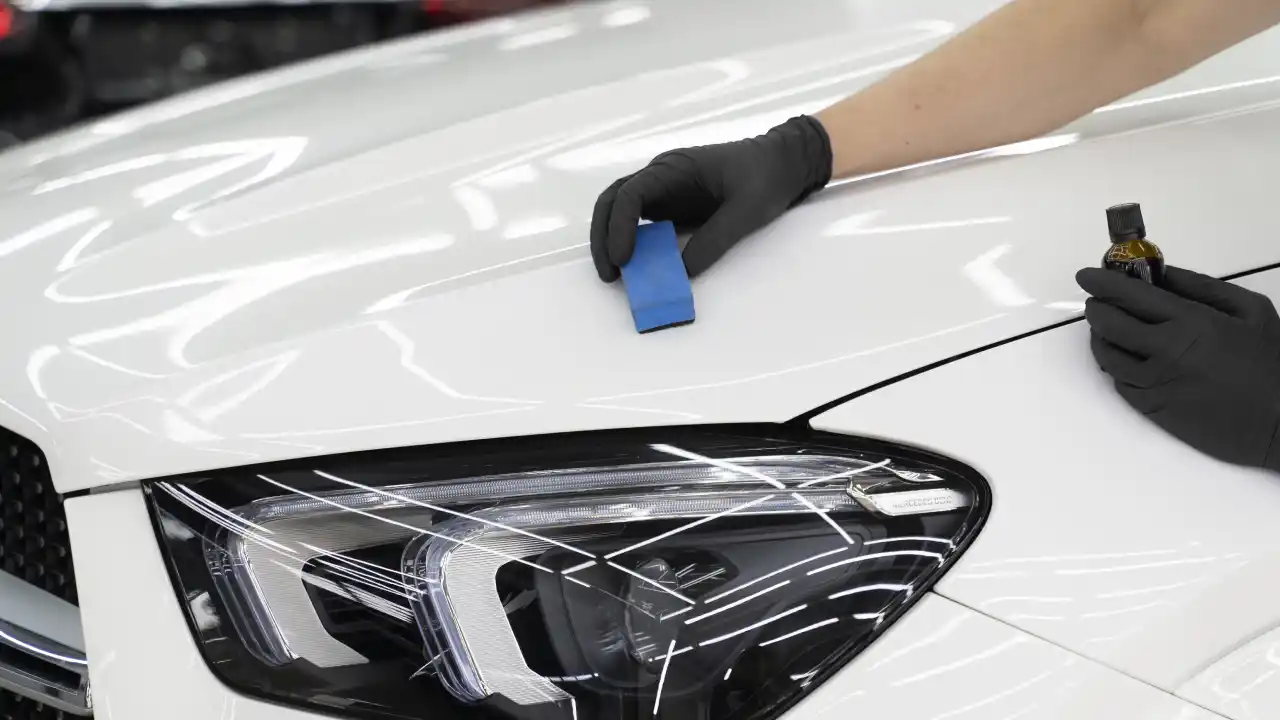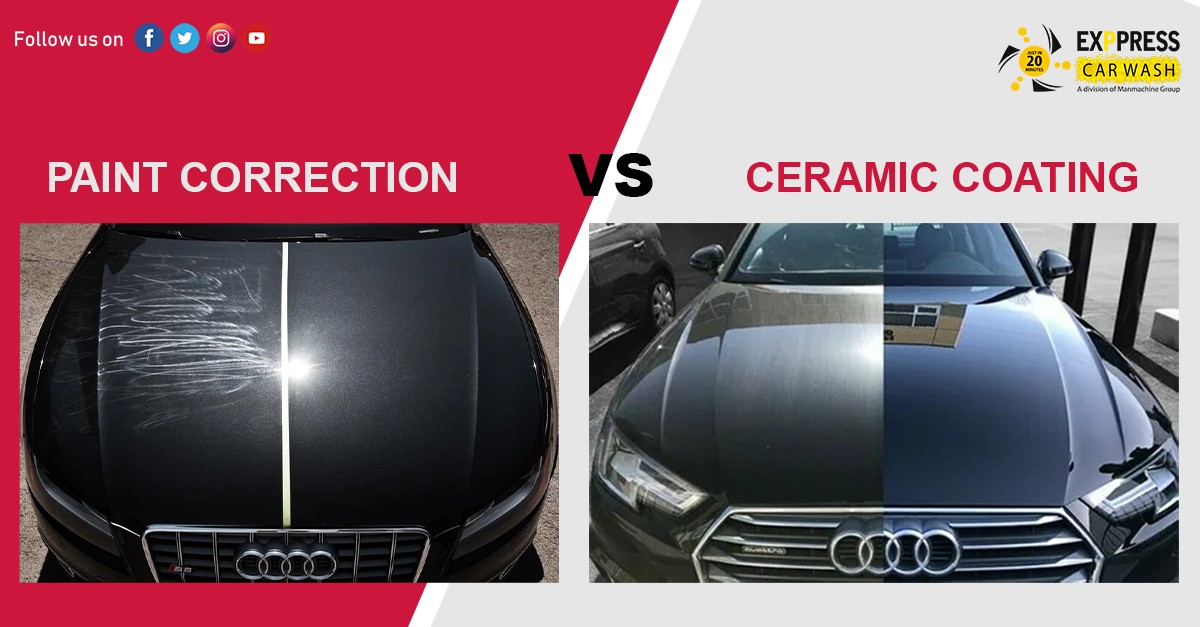Ceramic Coating: A Comprehensive Overview to Protecting Your Car's Paint
Ceramic Coating: A Comprehensive Overview to Protecting Your Car's Paint
Blog Article
Exploring the Science Behind Ceramic Layer and Its Influence On Automobile Explaining
The application of ceramic covering in auto detailing represents a considerable innovation in auto care, rooted in its sophisticated chemical residential properties, primarily silica dioxide and titanium dioxide. Understanding the science behind these materials exposes not just the safety advantages they use yet additionally their duty in boosting a lorry's visual long life. As we explore the complexities of the application process and the long-lasting ramifications for car maintenance, it becomes clear that the choice of ceramic covering can fundamentally alter one's strategy to automobile care. What considerations should be made before dedicating to this transformative option?
What Is Ceramic Covering?
Ceramic finish is a modern remedy that has obtained popularity in the auto detailing sector for its capability to provide resilient protection for car surface areas. This sophisticated safety layer is generally made up of silica dioxide (SiO2), which forms a strong bond with the car's paint, developing a resilient guard against environmental impurities. Unlike traditional wax or sealants, ceramic layers offer remarkable resistance to UV rays, chemical discolorations, and physical abrasions.
The application of ceramic coating includes a meticulous process, where the automobile's surface area is thoroughly cleaned and decontaminated prior to the layer is applied (Ceramic Coating). When cured, the finish boosts the lorry's gloss, deepness, and quality, giving a showroom-quality finish that lasts for many years. One of the crucial advantages of ceramic finish is its hydrophobic homes, which push back water and dust, making upkeep less complicated and reducing the frequency of washes
The Chemistry of Ceramic Covering
An essential aspect of ceramic finishing lies in its chemical composition, largely identified by the existence of silica dioxide (SiO2) This compound is integral to the development of a sturdy, safety layer that bonds chemically to the car's surface.
Along with SiO2, lots of ceramic finishes integrate titanium dioxide (TiO2) and other ingredients to improve their performance features. TiO2, for instance, adds to raised firmness and chemical resistance. The interaction in between these compounds develops an one-of-a-kind molecular framework that provides a high degree of security versus ecological factors such as UV rays, acid rainfall, and oxidation.
Additionally, the application procedure typically involves a thorough preparation of the surface area to guarantee optimum bond of the coating. This chemistry not just ensures a durable finish however also improves the aesthetic charm of the vehicle. Comprehending the intricate chemistry behind ceramic finishes is important for describing professionals that aim to provide remarkable protection and durability for their customers' cars.
Advantages of Ceramic Covering
While outlining specialists often highlight the advantages of ceramic coverings, their benefits extend far beyond visual appeals. Ceramic finishings produce a hydrophobic surface that wards off dirt, water, and grime, considerably minimizing the regularity of cleans and the initiative needed to maintain a car's appearance.
Moreover, ceramic coatings boost the long life article of the automobile's finish. Unlike traditional waxes or sealers, which might last a few months, ceramic finishings can endure for years, providing a lasting option for automobile care. This durability converts to cost financial savings, as proprietors are less most likely to need frequent reapplication.
In addition, ceramic finishes are resistant to chemical discolorations and etching, which can happen from acidic substances like bird droppings or tree sap. This resistance not just protects the vehicle's looks yet additionally minimizes potential damage - Ceramic Coating. In general, the financial investment in ceramic covering offers cars and truck owners a considerable return in terms of protection, simplicity of upkeep, and long-lasting visual allure, making it a progressively prominent choice in the world of automotive describing
Application Refine Discussed

As soon as the surface area is adequately prepared, the ceramic finish description can be used. Making use of an applicator pad, the service technician applies the layer in little sections, functioning in a crosshatch pattern to guarantee also insurance coverage.
After using the layer, the automobile must be permitted to cure, which might take a number of hours to a number of days, relying on the particular item made use of. During this duration, it is important to maintain the car far web from moisture and pollutants. As soon as treated, the ceramic coating develops a solid bond with the paint, offering improved protection and a glossy surface. Proper application is necessary to optimize the longevity and efficiency of the ceramic layer.

Long-lasting Effect On Car Care
The lasting effect of ceramic finishing on car care is substantial, as it basically changes exactly how owners keep their automobiles. By creating a sturdy, hydrophobic layer on the vehicle's surface area, ceramic finishes reduce the adherence of dirt, crud, and impurities. This property lowers the frequency of cleaning needed, ultimately preserving water and cleaning items.
Furthermore, the UV protection used by ceramic coverings aids to avoid oxidation and fading of the vehicle's paint, maintaining its aesthetic charm and resale value gradually - Ceramic Coating. This protective barrier additionally decreases the chance of scratches and swirl marks, which are usual issues in typical paint finishes
Additionally, ceramic coverings assist in easier upkeep, permitting owners to clean their lorries with minimal effort. The smooth surface area makes it difficult for pollutants to bond, making it possible for simpler removal throughout regular cleaning.
Over time, the financial investment in ceramic coating may cause set you back savings in car treatment items and solutions. Overall, the sustaining benefits of ceramic finishings not just enhance the look of cars yet likewise contribute to a much more sustainable and reliable technique to automobile maintenance.
Conclusion
To conclude, the application of ceramic layer represents a considerable improvement in auto detailing, driven by its one-of-a-kind chemical composition of silica dioxide and titanium dioxide. This technology not only boosts the visual charm of automobiles but also provides robust defense versus environmental risks and put on. The long-term benefits, including decreased maintenance frequency and improved toughness, highlight the value of ceramic finishes as a vital investment for maintaining automobile look and honesty over time.

Report this page